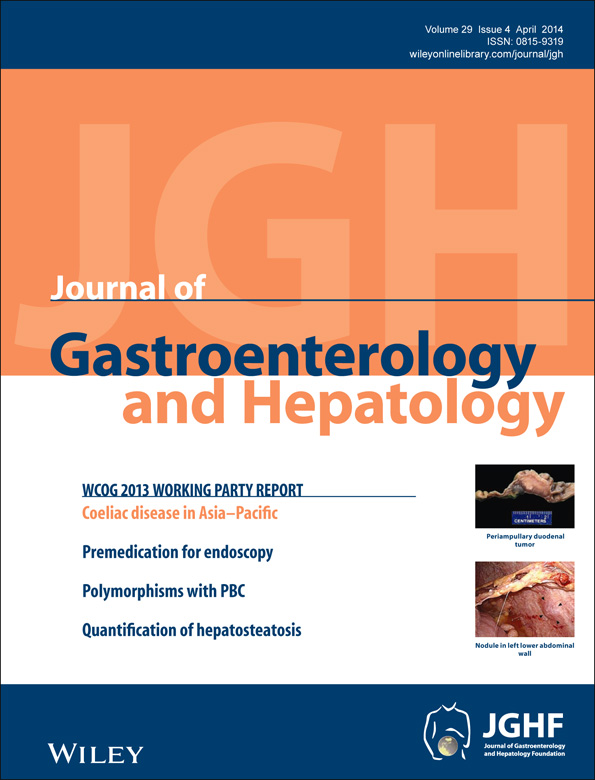Clinical appraisal of the recently proposed Barcelona Clinic Liver Cancer stage B subclassification by survival analysis
Abstract
Background and Aim
To evaluate the usefulness of Barcelona Clinic Liver Cancer B subclassification (B1–B4) proposed by Bolondi et al. in subjects with hepatocellular carcinoma treated with transarterial chemoembolization according to the current Barcelona Clinic Liver Cancer policy.
Methods
A total of 466 Barcelona Clinic Liver Cancer B patients initially treated with transarterial chemoembolization were included. The subclassification system was tested and modified on the basis of correlation with survival outcomes, which were examined by Kaplan–Meier method and log–rank test.
Results
There were 101 (21.7%), 232 (49.8%), 35 (7.5%), and 98 (21.0%) patients in B1, B2, B3, and B4, respectively. There was a significant difference in median survival time between B1 and B2 (41.0 vs 22.1 months, P ≤ 0.001), and B2 and B3 (22.1 vs 14.1 months, P = 0.004), but not between B3 and B4 (14.1 vs 17.2 months, P = 0.48). We, therefore, developed a modified subclassification, in which B3 subclass was merged with B4 as BIII, and BI and BII corresponded to B1 and B2. The median survival times differed between all three modified subclasses (41.0 vs 22.1 vs 16.6 months, P ≤ 0.001), and multivariate Cox analysis revealed that the modified Barcelona Clinic Liver Cancer B subclasses independently predicted overall survival (hazard ratios, 1.92 and 2.78 for BII and BIII vs BI; P < 0.001 for each).
Conclusions
The modified subclassification, which divides the Barcelona Clinic Liver Cancer B stage into three substages, would be an effective tool for stratifying this heterogeneous population and facilitating per-subclass-based treatment options.




